Hey there, fellow runners! Whether you’re a seasoned pro or just starting, finding the best running shoes can be overwhelming, especially since there are always new upcoming ones boasting different, unique selling points.
But don’t worry! In this article, we’ll be your guide.
We have put hundreds of men’s and women’s running shoes to the test. We have also collected research and scoured comments from users and experts.
Most shoes we test don’t even make it into our draft. We are super picky. Only the best of the best get a spot in our article.
One thing to remember is that the fanciest or most expensive brands aren’t always the best. This isn’t about popularity. This is about finding the ones that match your unique needs and won’t break the bank.
So now, let’s explore together how to choose the best pair that’ll fit you like a glove and won’t make your wallet scream in agony.
Table of Contents
The Best Running Shoes on Budget
Saucony Kinvara 13
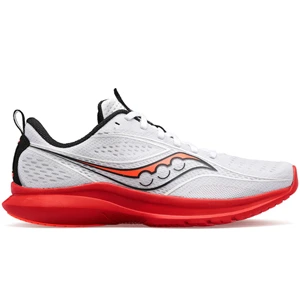
Key Specs:
| Weight | 213g (M), 117g (W) |
| Price | $50 (M), $59 (W) |
| Drop | 4mm |
| Sizes | 7 – 15 (M)
5 – 8 (W) |
The Saucony Kinvara 13 is the best running shoes if you want a fantastic one without spending a fortune. You might scoff at the price, but they are absolutely worth every penny. It’s a steal.
This shoe’s incredibly lightweight nature sets it apart, which means you will have a more enjoyable run with less fatigue.
That’s not all. This shoe fits you like a glove. It’s as if you’re running barefoot but still with the necessary protection and stability you need.
However, the Kinvara 13 is suitable for short and middle-distance runs only. Why?
Well, Saucony has stripped away the unnecessary fat, leaving only the essential components to unleash your inner speed demon. That’s why they are light as a feather so that you can focus only on speed.
Now, since this shoe has fewer components, you must pay more attention to your form, especially when you’re tired.
That’s why they are perfect for shorter runs. Not so for long distances.
Brooks Revel 6

Key Specs:
| Weight | 249g (M), 229g (W) |
| Price | $100 |
| Drop | 10mm |
| Sizes | 7 – 15 (M)
5 – 12 (W) |
If you’re searching for budget running shoes that are comfortable for short and long runs, the Brooks Revel 6 is the answer.
What’s awesome about this shoe is that it is versatile. It’s not just suitable for running; it’s also stylish to wear off the run.
Other than being comfy, the Revel 6 is springy, too! With its cool arrow-point pattern outsole, your feet can go from heel to toe in a flash, instantly helping you increase your pace.
Furthermore, the midsole foam takes care of your body by softening the impact during strenuous workouts. So you can tackle another tough training session sooner with fewer recovery sessions.
The Best Running Shoes with The Highest Durability
New Balance Fresh Foam X 860 v13
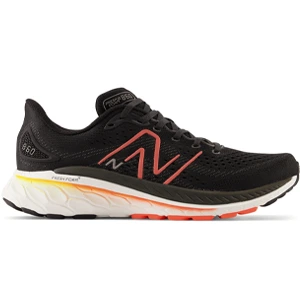
Key Specs:
| Weight | 309g (M), 246g (W) |
| Price | $140 |
| Drop | 10mm |
| Sizes | 7 – 16 (M)
5 – 13 (W) |
The New Balance Fresh Foam X 860 v13 is a beast when it comes to long-distance running. Here’s what Marathon Sports has to say:
“The toughest long-distance running shoes we’ve seen.”
The praise comes thanks to the improved outsole rubber that is tougher and more durable than the previous models. It also keeps you stable, even on those tricky, wet, bumpy surfaces.
There’s more to this beast! The 860 v13 is very comfortable for your feet. One happy user said he “felt great even after hours of wearing them.”
Adding to the comfort, Runner’s World mentions that none of their tester had a cramped pinky toe. This is no surprise, as this shoe’s forefoot and toebox are wide. It’s spacious, but it will not make you feel sloppy. So, we highly recommend you get a close-to-perfect fit size.
However, this shoe is less suited for speedwork because of the weight. But when you pick up the pace, the responsive and energetic takeoff element will push you.
Do note that this element is not available in other similar shoes; that’s one of the reasons that sets this shoe apart.
Nike Pegasus 40

Key Specs:
| Weight | 266g (M), 221g (W) |
| Price | $130 |
| Drop | 10mm |
| Sizes | 6 – 13 (M)
5 –12 (W) |
When it comes to durability, the Nike Pegasus 40 is the real deal.
Don’t just take our word for it. Read what this awesome dad says:
“I’m the type of person who is very hard on shoes. I go through so many pairs a year, and this shoe lasts! It’s super comfortable and supportive. I’m a busy dad with two active boys, and these are the first ones I’ve gotten that I can keep up with! I will be investing in multiple pairs!”
Other than that, this shoe will fit you perfectly. It’s roomy. So no toe-squeezing. Your tootsies will be grateful for it!
The Pegasus 40 is also made of very lightweight material that keeps your feet cool. Hence, your feet won’t sweat.
But they can get a bit cold with thin socks. It’s not entirely waterproof too. So watch out for puddles and rain!
All in all, the Pegasus does its job. Supporting you during your run, taking care of your feet, and offering the option for all-day wear.
The Best Running Shoes for Trail
Saucony Peregrine 13
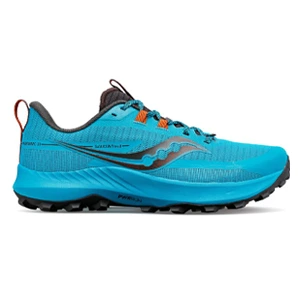
Key Specs:
| Weight | 260g (M), 230g (W) |
| Price | $137 (M), $85 (W) |
| Drop | 4mm |
| Sizes | 7 – 15 (M)
5 – 12 (W) |
Introducing the speed demon of the wild, the Saucony Peregrine 13 — the best running shoes for the trail.
This shoe is so amazing that even the pickiest trail runners could love it.
Why, you may ask? The Peregrine 13 lets you safely blaze through the trails faster than ever before, thanks to the extra cushioning and lightweight.
Other than that, the rock plate can guard you against sharp stones.
Also, the PWRTRAC lug on the outsole is like falcon claws. Super grippy on all terrain, even on wet and muddy downhills, to prevent you from any unexpected tumbles.
Talking about tumbles, we stumbled upon an incredible customer review. She said she managed to rock the Peregrine 13 for over 500 miles (800 kilometers) and tackled 30+ mountains!
No wonder it is loved even by the pickiest trail runners.
Hoka Mafate Speed 4
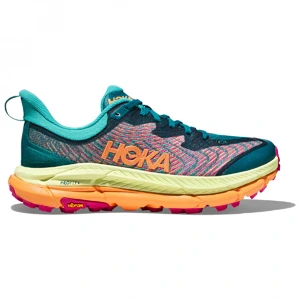
Key Specs:
| Weight | 294g (M)
238g (W) |
| Price | $185 |
| Drop | 4mm |
| Sizes | 7 – 14 (M)
5 – 11 (W) |
The other best running shoes for the trail is the Hoka Mafate Speed 4. This shoe is also super grippy and springy.
The outsole is full of sharp edges to grip the ground fiercely. One ecstatic customer even said the Mafate Speed 4 made her “stuck to the trail like glue with hardly any slip at all when coming down.”
This shoe also comes with a dual-density midsole. It’s a perfect balance between cloud-like comfort and responsiveness that bounces you.
Another ecstatic customer claims that even after conquering 400 miles (643 kilometers) of trails, this shoe still brings a decent amount of that bounce!
Hey, even non-runners will love this shoe. We know a nurse who swears by this shoe to walk around comfortably for the whole 12-hour shift. That’s some serious comfort!
However, the Mafate Speed 4 doesn’t have a rock plate like the Saucony Peregrine 13. Nevertheless, the toe bumper still gives good protection.
The ankle collar also may allow dirt and debris to come in.
Best Running Shoes for Everyday Use
Nike ZoomX Invincible 3
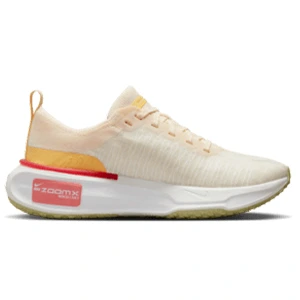
Key Specs:
| Weight | 280g (M)
229g (W) |
| Price | $180 |
| Drop | 9mm |
| Sizes | 6 – 15 (M)
5 – 12 (W) |
Meet the Nike ZoomX Invincible, the best running shoes for everyday use.
This shoe has high support, super-high responsiveness, and super-high cushioning, all in one package. This is a tough combo to find.
First up, we have the high support feature. This gives you more stability when running to ensure your feet are protected against under or overpronation. This shoe will be perfect whether your feet are flat as a pancake or have high arches.
Next is the super-high responsiveness. This gives you more energy returns to bounce/boost you back up easily, whether you want to run a little faster or with less effort.
Let’s not forget the super-high cushioning. When your feet hit the ground, the cushion softens the impact and keeps you comfortable. One thrilled customer with crippling knee pain said, “These actually help prevent the knee pain that has plagued me for years… and I do not say this lightly. Try a pair yourself already!”. Now that’s a game-changer!
We did hear a little dissatisfaction from some users. They feel that the heel is going to come off. But many other users also feel the same. What they do is they tie their shoelace using the runner’s knot, and voila, problem solved.
Brooks Ghost 15
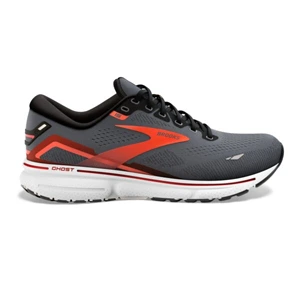
Key Specs:
| Weight | 277g (M)
221g (W) |
| Price | $140 |
| Drop | 12mm |
| Sizes | 6 – 15 |
Let’s talk about the Brooks Ghost 15, the other best running shoes for everyday use.
Whether running on the road, doing cross-training, or hitting the gym, they’ve got you covered.
This shoe has two shock absorbers — the soft midsole and a Segmented Crash Pad. These two ensure your foot flow safely from landing to toe-off, no matter how your foot lands or your foot type.
All-around Running Shoes For Men
ASICS Novablast 3
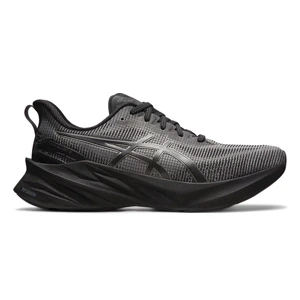
Key Specs:
| Weight | 252g |
| Price | $130 |
| Drop | 8mm |
| Sizes | 7 – 15 |
Asics Novablast 3 is the one-of-a-kind, all-around running shoes that perform well at any distance or pace. It’s the Swiss Army knife of running shoes – a true do-it-all.
The Novablast 3 has superior comfort and durability wrapped up in one, so it proudly sits at the top among the best running shoes for men.
RunRepeat puts it in a lab test. Guess what they found?
The midsole is 45% softer than average. When they put it in the freezer to simulate cold weather, it’s still softer by 16.7% than the average running shoes at room temperature.
In other words, your shoe stays soft and comfy no matter the weather!
They also found that the outsole could take a lot of beating even after hitting double-digit miles. This means it has a hard rubber that could resist more wear and tear.
Here’s a review from one of the satisfied runners: “These are honestly perfect for my everyday runs!! My pair lasted for more than 1,000 kilometers!”
One thing to remember is that this shoe’s breathability is not so breathable. You might get sweaty feet in the summer.
All-around Running Shoes for Women
Lululemon Blissfeel 2

Key Specs:
| Weight | 252g |
| Price | $128 |
| Drop | 9.5 mm |
| Sizes | 5 – 12 |
If you’re a lady reading this, we have some great news!
Lululemon Blissfeel 2 is the best running shoes for women. Here’s why:
This shoe is special because the Blissfeel 2 is engineered exactly for the female foot. They’re designed based on 1 million foot scans and 4 years of research and development for a bliss feel and fit (wink, wink).
The Blissfeel 2 is also durable. The rugged segmented outsole can handle the toughest road pounding. Absolutely road-run ready.
Amanda Furrer, who has been a Boston Marathoner every year since 2013, said
“Running in the 2 felt like running in Adidas’s Ultraboost.”
We are not surprised by that claim. The soft and springy cushioning in this shoe bounces you right back up. Similar to the boost that Ultraboost has.
However, one setback we noticed about the Blissfeel 2 is that it’s the same weight as the men’s ASICS Novablast 3.
If you fancy lighter shoes, you may want to consider other options. If not, go for the Blissfeel 2. But trust us, the weight won’t affect your running that much.
Important Guides on Selecting The Best Running Shoes
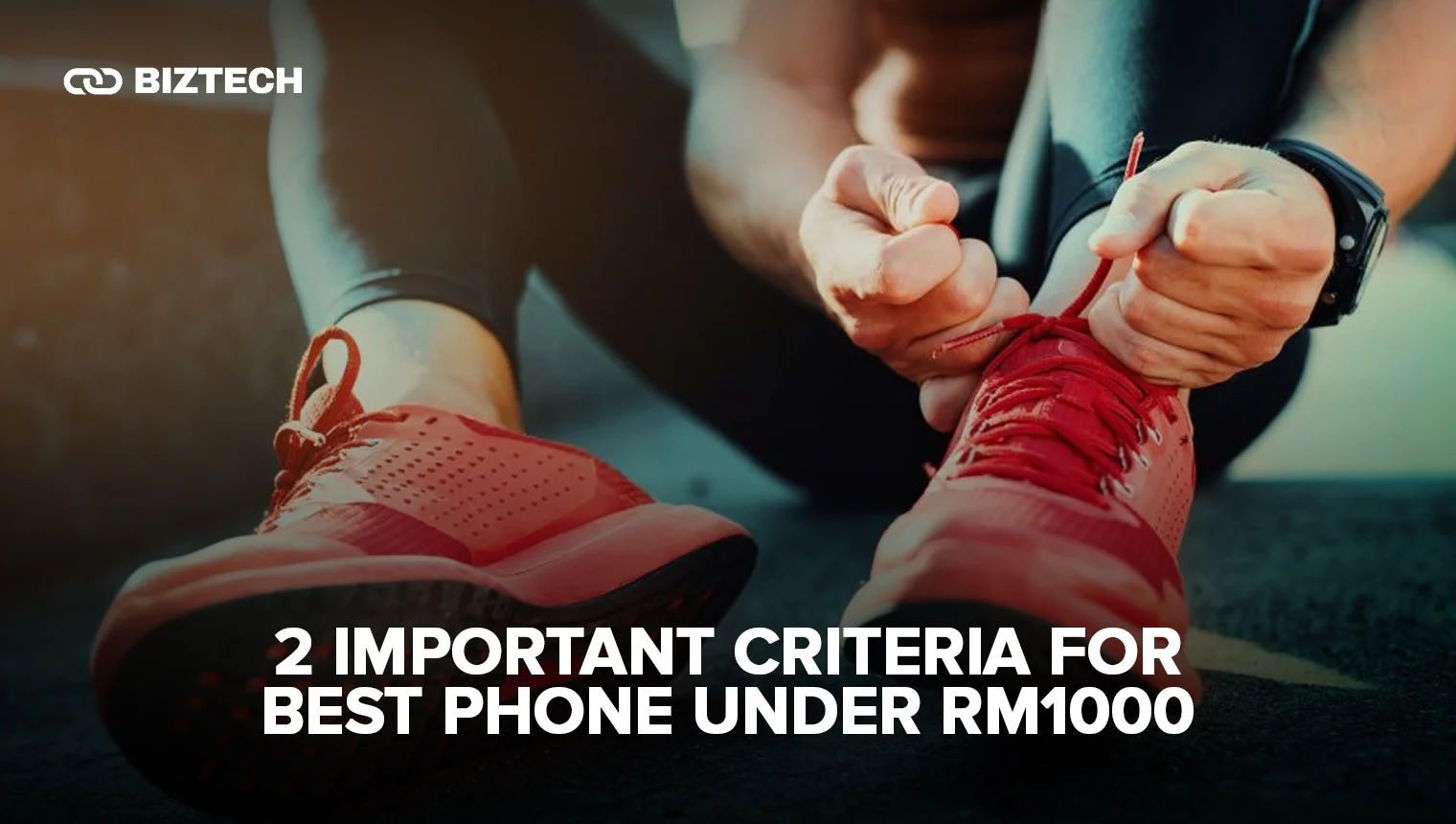
Price
The best shoes for running can range between $50 to $250 or more. So, setting a budget is a smart move to avoid overspending.
However, the most expensive ones on the shelf aren’t always the absolute best. So, don’t worry. There must be a shoe perfect for your feet and wallet.
Size
Running shoes should fit you snugly but comfortably. Here’s a helpful tip: Make sure there is about a thumb’s width of space between your toe and the front of the shoe.
Comfort
Comfort is the top priority when buying new shoes. They should feel comfortable on your feet when you try them on. If they don’t right away, they won’t magically be any better during your run.
Special Features
Special features like extra cushioning, stability support, or super traction can have added advantages to your run or help in balancing your weaknesses or pronation. Please confirm that the shoes have what you need before paying.
Terrain
If you plan on trail running, you will need a different type of shoe than if you plan on road running. Trail running shoes have more grip and support to help you run safely on uneven terrain than the average road running shoes.
Pronation
Pronation is the way your foot rolls inward when landing to distribute impact. It is largely depending on your foot type.
There are three types of pronation:
- Underpronator: Your foot lands on the outside heel with little or no inward rolling, causing pressure on smaller toes on the outside foot. (Foot type: high arches)
- Neutral: Your foot lands on the outside heel, rolls inwards to the center of your foot, and then finishes at the ball of your foot to distribute shock evenly. (Foot type: normal-size arches)
- Overpronator: Your foot lands on the outside heel, then rolls inwards excessively to the inner edge of your foot instead of the ball, causing pressure on the big toe and second toe. (Foot type: flat feet or low arches)
It is important to choose a running shoe that is designed for your foot type and pronation. Here’s a simple guide:
- Underpronator: Cushioned running shoes because the extra cushioning absorbs more impact.
- Neutral: Neutral running shoes.
- Overpronator: Stability running shoes because it controls your foot’s inward rotation (pronation).
Conclusion
Research reveals that around 4 in 5 runners risk injury when running in shoes that don’t suit their running style.
Therefore, understanding your pronation type, the features that help you overcome the problem, and the suitable shoes depending on the terrain will reduce unwanted injury when running.
We hope we have given you some helpful insights on choosing the perfect for your feet and occasion.
Remember, your comfort reigns supreme when buying shoes.
So, until we meet again!

 Malaysia
Malaysia
 Singapore
Singapore
 Philippines
Philippines